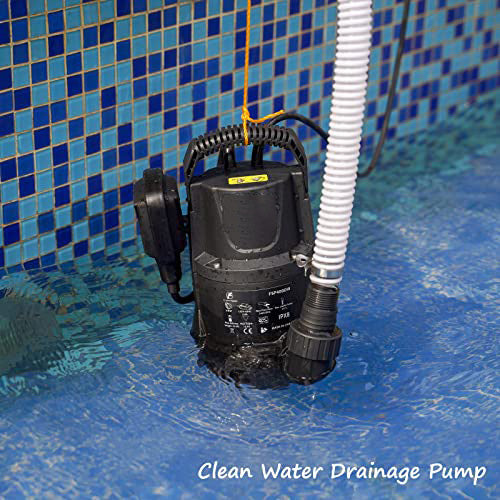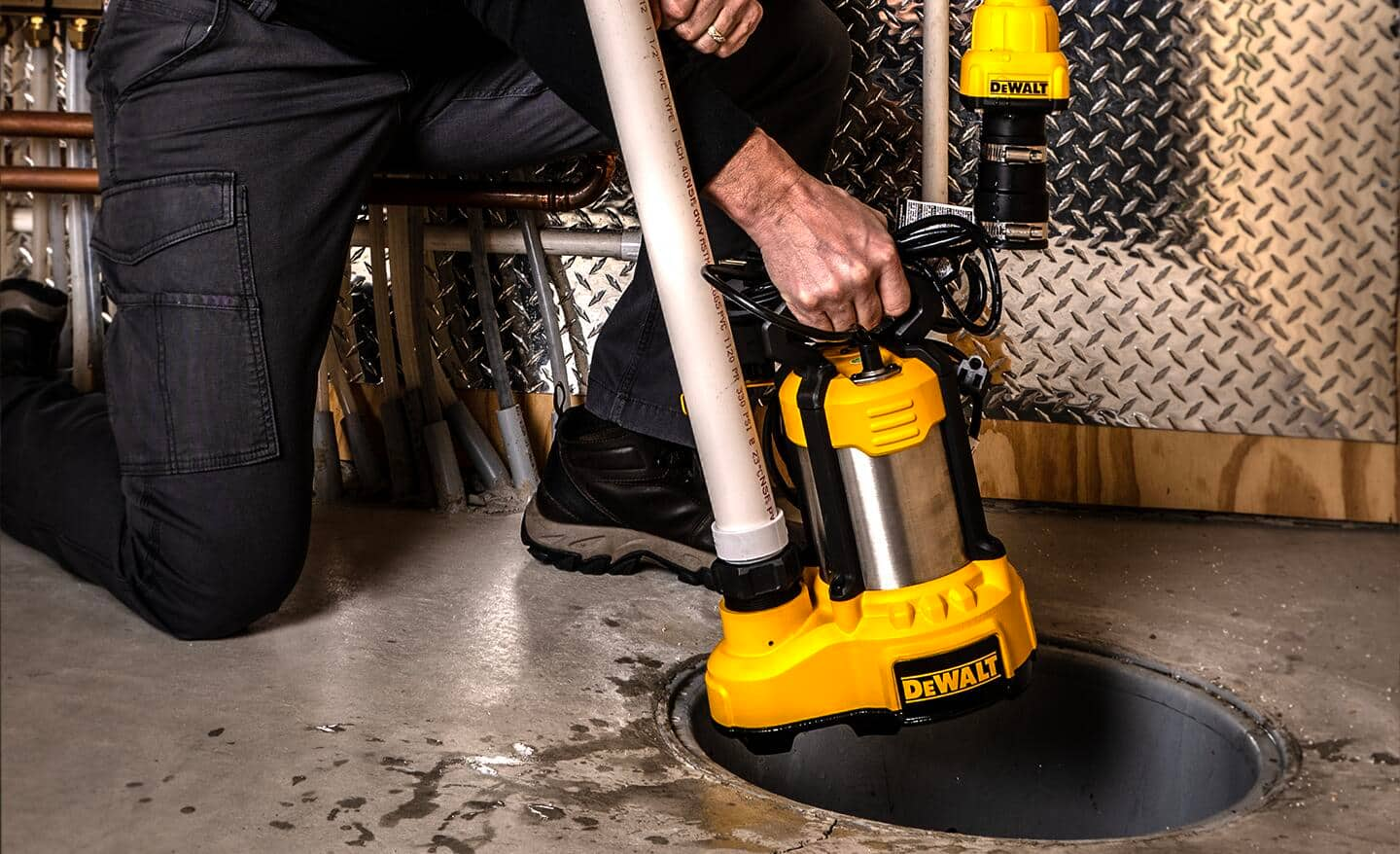Effortless Methods to Clean a Sump Pump
Effortless Methods to Clean a Sump Pump
Blog Article
How do you feel about How to Care for Your Sump Pump?

Sump pumps are important elements in lots of homes, especially in areas prone to flooding or extreme wetness. They aid avoid water damage by efficiently removing excess water from cellars or crawl spaces. Nevertheless, like any other device, sump pumps need routine upkeep to guarantee they work successfully when required the most. Cleaning your sump pump is an essential part of its maintenance, and understanding exactly how to do it appropriately can conserve you from expensive fixings and potential catastrophes.
Introduction
Maintaining a tidy sump pump is crucial for its appropriate functioning and durability. Ignoring this important job can cause obstructions, malfunctions, and ultimately, water damage to your residential property. Consequently, learning exactly how to cleanse a sump pump is crucial for house owners that rely on these devices to maintain their cellars dry and safeguarded.
Indications of a Dirty Sump Pump
Knowing when your sump pump needs cleaning is essential for avoiding potential malfunctions. Some typical signs that show a dirty sump pump include unusual noises throughout procedure, lowered water flow, and visible debris in the pit. If you discover any of these symptoms, it's necessary to cleanse your sump pump quickly to avoid any more problems.
Getting ready for Cleaning
Before you start cleaning your sump pump, it's necessary to take some safety and security preventative measures. Start by turning off the power to the pump to stay clear of any type of electrical mishaps. In addition, wear proper protective equipment, such as handwear covers and goggles, to protect yourself from dirt, particles, and potential microorganisms.
Comprehending the Sump Pump
Before diving right into the cleaning procedure, it's essential to have a basic understanding of just how a sump pump works. Normally mounted in a pit or container listed below the basement floor, a sump pump consists of several key components, including a pump, a float button, and a discharge pipeline. When water builds up in the pit, the float switch activates the pump, which then pumps the water out with the discharge pipeline, far from the structure's structure.
Step-by-step Overview to Cleaning Up a Sump Pump
Shutting down the Power
Begin by disconnecting the power supply to the sump pump to avoid any kind of crashes while cleaning.
Looking For Correct Performance
Before reinstalling the pump, do a quick test to make certain that the float switch turns on the pump correctly. Pour some water right into the sump pit and observe the pump's operation. If whatever is functioning appropriately, you can rebuild the pump and reconnect the power supply.
Removing Particles and Dirt
Use a pail or a scoop to get rid of any kind of noticeable particles, dirt, or debris from the sump pit. Dispose of the debris effectively to prevent it from blocking the pump or the discharge pipeline.
Cleansing the Pump and Drift Switch Over
When the pit is clear of debris, carefully eliminate the pump from the pit. Examine the pump and the float button for any signs of damages or wear. Make use of a soft brush or fabric to clean up the surface areas and eliminate any type of built up gunk.
Flushing the System
After cleansing the pump and float switch, purge the sump pit with tidy water to remove any kind of continuing to be dust or sediment. This will certainly assist make certain that the pump runs smoothly and effectively.
Upkeep Tips to Keep Your Sump Pump Clean
In addition to routine cleansing, there are several upkeep pointers you can follow to maintain your sump pump in ideal problem:
Conclusion
Cleaning your sump pump is an important element of its upkeep and guarantees that it runs successfully when you require it one of the most. By complying with the steps outlined in this overview and incorporating routine maintenance into your routine, you can extend the lifespan of your sump pump and shield your home from water damages.
6 STEPS ON HOW TO CLEAN A SUMP PUMP PROPERLY
UNDERSTANDING SUMP PUMPS
Your sump pump plays a crucial role in protecting your home by managing and removing excess water. It primarily functions as a “shield”, guarding your basement against the damaging effects of water accumulation. The pump is housed in a sump pit in the lowest part of your basement, and its job is to pump out any water that collects there.
During heavy rainfalls or when snow melts rapidly, water can infiltrate your basement, posing potential risks like flooding, structural damage, and harmful mold growth. Here, the sump pump springs into action, pumping out the intruding water and directing it away from your home.
SAFETY FIRST
Before cleaning, remember to prioritize safety. Disconnect the sump pump from the power source to prevent any accidental electric shocks. Also, wear sturdy gloves to protect your hands from any sharp or dirty components within the pump.
REMOVE THE SUMP PUMP
After ensuring your safety, the next step is to remove the sump pump from its pit. Doing this might require careful maneuvering as you don’t want to damage any pump components. Once removed, clean the sump pit to remove any accumulated debris or sludge.
INSPECT THE PUMP
Inspect the pump for any visible signs of wear or damage. Check the power cord, float switch, and impeller housing. If any components look worn out or damaged, consider replacing them to ensure optimal performance.
CLEAN THE PUMP
Thoroughly clean the pump with warm, soapy water. Make sure to rid it of any dirt, gravel, or other debris that might impede its performance. You can use a toothbrush to clean the small, hard-to-reach parts of the pump.
REINSTALL THE SUMP PUMP
Reinstall the pump into the sump pit Make sure it’s positioned correctly to remove the water effectively Once it’s back in place, reconnect it to the power source TEST THE PUMP
Finally, pour some water into the pit to ensure the pump works correctly. It should start automatically and begin pumping out the water; if it doesn’t, check the power source and the positioning of the pump.
Remember, while cleaning your sump pump is an essential part of home maintenance, hiring a professional plumber for a thorough inspection and cleaning at least once a year is also important. This will ensure that your pump is in optimal condition, ready to protect your home from potential water damage.
BEST PRACTICES FOR CLEANING SUMP PUMP DISCHARGE PIPES
Regular Inspection: Regularly inspect your discharge pipes, especially during heavy rainfall or snowmelt periods. Look for any signs of blockage or damage. Early detection of problems can prevent serious issues down the line. Periodic Cleaning: Over time, sediment and debris can accumulate in the discharge pipes, impeding the flow of water. Regular cleaning helps keep the pipes clear and functioning efficiently. You can use a high-pressure water jet to effectively clean the pipes. Insulation During Winter: In colder climates, discharge pipes can freeze, blocking the outflow of water. Protect your discharge pipes from freezing temperatures by insulating them with foam pipe insulation. This will ensure the sump pump can continue to discharge water even in freezing conditions. Proper Positioning: The discharge pipe should be positioned to direct water away from your home’s foundation. Improper positioning can lead to water seeping back into the basement. Ensure the pipe is long enough and angled correctly. Installation of a Check Valve: A check valve prevents water from flowing back into your sump pit after the pump has pushed it out. Installing a check valve helps maintain the efficiency of your sump pump and reduces the risk of flooding. Minimize Pipe Turns: Every curve or turn in the discharge pipe can decrease the efficiency of water flow. By minimizing turns and bends in your discharge pipe, you can increase the efficiency of your sump pump. https://www.fullspeedplumbing.com/how-to-clean-a-sump-pump-properly9999/

We were made aware of that article on Cleaning & Maintenance Tips for Your Home's Sump Pump from someone on our other site. Don't hesitate to take a moment to promote this write-up if you enjoyed reading it. Thank you so much for taking the time to read it.
Free Estimate Report this page